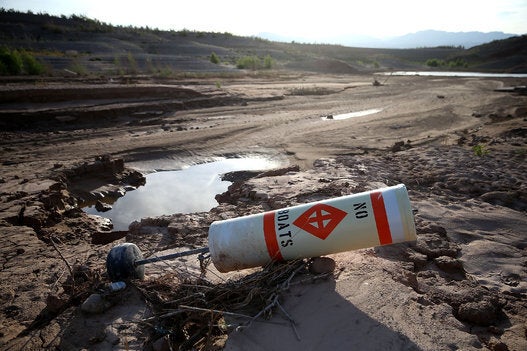It was unprecedented. It disrupted millions of lives. It shook the world. But the 2015/2016 El Niño is over, finally having run its course.
The climate phenomenon has left us with not only a trail of destruction so vast that more than one million children will need treatment for severe acute malnutrition this year, but also a taste of what could be to come with its stormy sister, La Niña. Unless we prepare now to reduce future risk of disaster, we jeopardize progress towards achieving a more sustainable and equitable world, not to mention putting millions more lives at risk.

This most recent El Niño event was one of the strongest in recorded history, fuelling the highest global temperatures in more than 130 years, forcing thousands to flee their homes, creating large crop losses and food price increases, affecting water supplies and leaving millions at risk of malnutrition. The latest cycle, which began 16 months ago, hit hardest in some of the world's already poorest countries, the effects of which are now being felt. Children are among the worst affected.
In Ethiopia, drought meant that more than 10 million people will need humanitarian food assistance this year. In Fiji, Cyclone Winston destroyed almost 500 schools, jeopardizing the education of thousands. In Haiti, where drought led to a large drop in agricultural production, more than 1.5 million people are now in need of immediate food assistance. From Southern and Eastern Africa to Central America, from the Caribbean to Asia and the Pacific, regions already under tremendous resource strain have reached their limits.

The result? Children are staying away from class to fetch water, or relocating with their families because they lost all of their crops or livestock. Malnutrition and disease are soaring, as children are forced to skip meals, drink unsafe water, or live in areas ripe for the breeding of Zika-transmitting mosquitos. The risk of increased HIV transmission is real, with a recent study of 18 sub-Saharan African countries showing HIV infection rates in rural areas up by 11 per cent after every recent drought. All of these constraints on livelihoods lead to desperate families taking desperate measures to survive, and ultimately children's rights being put at risk.
The real tragedy in all of this would be if despite the devastation and deaths, we did not learn our lesson or brace for what's ahead as best we can. If La Niña does strike, bringing the heavy rains and drought it promises, the impact on communities left already vulnerable by El Niño could be disastrous. And with the chance of La Niña lasting up to 12 months, the consequences could be extreme.

More children will face severe acute malnutrition, food insecurity and potentially deadly diseases. More families will have to resort to negative coping mechanisms or migration. School attendance will drop further. And there are concerns La Niña could lead to the spread of the Zika virus to parts of Latin America and the Caribbean that were not previously affected.
The Government of Canada has taken action, committing $2.65 billion to tackle climate change, including funds for Disaster Risk Reduction, and has also provided critical humanitarian assistance funding to address climate-related humanitarian emergencies, including $4 million to support UNICEF's efforts to protect children affected by drought in Ethiopia.

What lies ahead does not have to be a scenario of doom and gloom. We know what needs to be done to build resilient communities: We must step up vaccination drives, provide HIV education and services, support schools to stay open, provide safe drinking water, treat young children suffering from severe malnutrition and provide food support to vulnerable households, and mobilize communities to promote good health and hygiene practices.
UNICEF is already doing this work in the most vulnerable places, but as a global community we need to collectively increase our efforts. We must treat El Niño as a lesson for what's to come. We must ensure that our past prepares us or face the tragic consequences of repeating it.
Follow HuffPost Canada Blogs on Facebook
MORE ON HUFFPOST:
